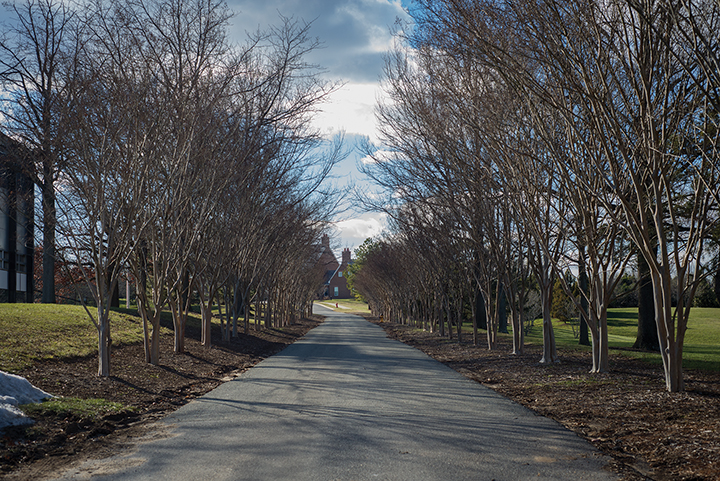Last weekend, several University of Maryland students journeyed into Washington to see the famed cherry blossom trees in peak bloom. Many of them might not have known they could see those iconic Yoshino cherry trees right on the arboretum — er, the campus.
“We have the very same cherry trees they have down at the Tidal Basin, as well as a number of others,” said Karen Petroff, assistant director of Facilities Management’s Arboretum and Horticultural Services. “There are trees on the north side of the Mitchell Building … and almost 200 more around campus.”
The university has a lot more than cherry trees, though. In fact, it’s home to more than 15,000 documented living specimens, Petroff said. As of 2008, the campus has been designated an arboretum, or botanical garden of trees.
There are three basic criteria that make the university an arboretum, Petroff said.
The first, she said, is the university’s in-depth documentation of plant materials.
“All of that information is tracked, and not just what it is, but why it is, how it is and where it came from,” Petroff said. “We can pull up information on what’s the tallest tree on campus, what’s the tree with the largest canopy spread.”
The second standard for designation as an official arboretum is an element of study, said Petroff. Students enrolled in this university’s agriculture and natural resources college might survey their surroundings as part of their curricula, she said.
Finally, being an arboretum means being open and available to the community at all times, Petroff said.
In addition to the university’s accessible campus, the Arboretum Outreach Center, located in the Apiary Building, hosts garden-related events and activities throughout the year, as well as offering self-guided tours and walks canvassing different parts of the campus.
While the university was only officially named an arboretum eight years ago, Petroff said the concept has been around since the university’s founding as an agricultural college in 1856.
“The beauty we enjoy on the campus now is a long concern and long tradition for the university,” said Anne Turkos, university archivist.
The campus’ appearance has always been important, Turkos said. When the university first opened, the press focused on the fact that the grounds were still unfinished, archives show.
In the 1800s, students were required to work in the fields and gardens as part of their study. It wasn’t until the early 1900s that administrative staff took over responsibility for maintaining the campus grounds.
Today, students can — and do — still get involved by volunteering at the arboretum.
“Over the last five or six years, we’ve had over 10,000 hours of volunteer work each year,” Petroff said.
Still, she said some students are unaware of the fact that their campus is an arboretum and might even take their surroundings for granted.
“It’s really unique for students who attend the University of Maryland, and especially those who live on-campus,” she said. “I think we continue to enlighten students as we have the opportunity, and I hope one day we will be able to achieve everyone knowing before they attend and carrying that knowledge.”



